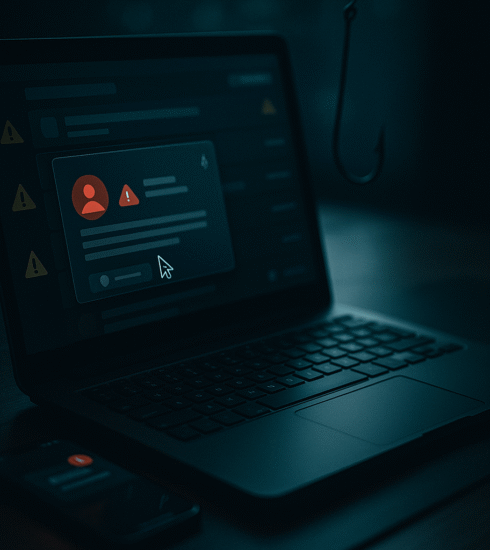What Is OPSEC Simple Definition And Daily Use
Operational security, often abbreviated as OPSEC, is a process for identifying critical information and subsequently protecting it. It is not a specific tool or a piece of software but a disciplined way of thinking. This methodology helps you see your own actions from an adversary’s perspective to identify vulnerabilities. The core goal is to prevent sensitive information from reaching the wrong people while still allowing it to flow to the right ones. For civilians, this translates to protecting personal data from criminals, corporations, and any entity that might misuse it. Applying a simple OPSEC mindset to your daily routine can significantly enhance your personal privacy and security without drastic changes. It is about making conscious choices to control your digital and physical footprint.
OPSEC is not about secrecy. It is about denying adversaries the information they need to predict your actions or exploit your vulnerabilities. The simplest defense is often awareness and inconsistency in your patterns.
The Five Step Process in Daily Life
The formal OPSEC process consists of five distinct steps that can be applied to any aspect of your life. The first step is to identify your critical information. This is the data that, if exposed, could cause you personal or professional harm. For most people, this includes passwords, travel itineraries, financial details, and schedules. You must decide what is truly worth protecting before you can begin to protect it effectively. Not everything is critical, and trying to secure everything leads to fatigue.
Step two is to analyze the threats. Who or what wants your critical information? This could range from identity thieves and aggressive marketers to more targeted threats. Understanding the capabilities and intentions of these threats helps you gauge the level of protection required. Step three is to analyze your vulnerabilities. How are you currently leaking this critical information? An example is posting vacation photos in real time on social media, which announces your empty home to the world. This step requires honest self assessment.
The fourth step is assessing the risk. What is the likelihood a threat will exploit a vulnerability, and what would the impact be? This evaluation helps you prioritize your efforts. The final step is to apply appropriate countermeasures. These are the actions you take to mitigate the vulnerabilities you identified. A countermeasure could be as simple as disabling geotagging on your smartphone camera or using a password manager. This five step cycle is not a one time event but a continuous loop of evaluation and adjustment.
Digital Pattern Analysis and Misdirection
Your digital life is a goldmine of predictable patterns that can be exploited. Advertisers and algorithms constantly analyze your behavior to serve you content and ads. Malicious actors can use this same data for social engineering attacks. A key OPSEC principle is to break these predictable patterns whenever possible. This does not mean living a life of chaos but introducing enough variability to make profiling difficult. Vary the times you post on social media or shop online. Use different web browsers for different activities to compartmentalize your digital profile.
Misdirection is another powerful, yet simple, tool. If you must maintain a public social media presence for work, consider filling it with a mix of genuine and mundane content. Post about hobbies or share articles that do not reveal your true location or intentions. This creates noise that obscures the true signal of your valuable information. The goal is to make it computationally expensive and ultimately pointless for an observer to try and build an accurate model of your life. You are adding friction to the data collection process.
Your greatest vulnerability is your routine. Predictability is a risk. Vary your routes, your timings, and your online habits. Do not make it easy for anyone to build a pattern of life on you.
Conversational Awareness and The Need to Know
One of the most common ways critical information is leaked is through casual conversation. People naturally share details about their lives, their work, and their plans without considering the audience. The military principle of need to know is highly applicable here. Before sharing any piece of information, ask yourself if the person you are talking to genuinely needs that information to perform their function. Your coworker does not need to know the exact dates of your upcoming vacation, only that you will be out of the office.
This also applies to phone calls and discussions in public spaces. Be aware of your surroundings and who might be within earshot. Avoid discussing sensitive matters like financial problems or travel plans on a crowded train or in a restaurant. This is not about paranoia but about practicing discretion. Encourage your family to adopt the same mindset. A simple agreement to not discuss travel plans on social media or in public can drastically reduce your exposure to opportunistic threats like burglary.
Practical Countermeasures for the Home
Your home is a repository of your most critical information, from financial documents to personal devices. Physical OPSEC is just as important as its digital counterpart. Simple countermeasures can have a major effect. Use a cross cut shredder for any mail containing your name, address, or account numbers before disposing of it. Do not leave laptops or external hard drives in plain sight from a window. These are tempting targets for a smash and grab burglary.
Be mindful of your trash. The garbage you set out on the curb tells a story about your household. It can reveal new purchases, financial status, and personal habits. While you cannot hide everything, being aware of this information stream is important. For those with higher concerns, consider a safe for physical documents and backups. The countermeasure should always be proportional to the value of the information and the assessed threat. Most importantly, these habits should become automatic, requiring little active thought once established.
The Psychology of OPSEC Compliance
The hardest part of OPSEC is not understanding the concepts but maintaining consistency. Security measures are often seen as inconvenient obstacles to daily life. The key to long term adoption is to integrate these practices so seamlessly that they become second nature. Start small by focusing on one vulnerability, such as using unique passwords for every account. Once that habit is solidified, move on to the next, like reviewing social media privacy settings. Trying to change everything at once leads to burnout and abandonment of the entire process.
It is also crucial to avoid the fortress mentality. The goal of personal OPSEC is not to live in a bunker cut off from the world. It is to engage with the world more safely and on your own terms. The mindset should be one of confident awareness, not fear. You are taking rational, measured steps to control your personal information. This sense of control is itself a powerful psychological benefit that reinforces the continued practice of good operational security habits.
OPSEC is ultimately a personal responsibility. It is a lens through which you view your own actions and their potential consequences. By adopting this simple, process driven approach, you take active control over your privacy and security. You move from being a passive target to an aware participant. Start today by identifying one piece of your critical information and one step you can take to better protect it. That single action is the beginning of a more secure future.





